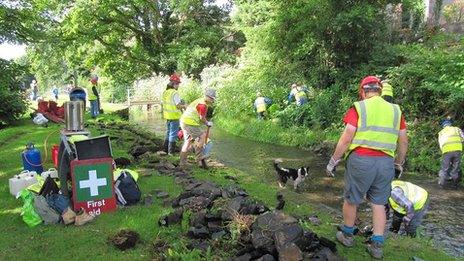Swansea canal in Clydach to be put back to water
- Published

A view of the bridge at Clydach
Constructed between 1794 and 1798, the Swansea canal once ran for more than 16 miles between Swansea and Abercraf, and was the artery which created the Swansea valley as we know it.
However, once it had served its usefulness, two-thirds of it was given an unceremonious burial beneath the city's post-war buildings and the new A474 road up the Tawe valley.
Now - thanks to a dedicated band of enthusiasts - a small but vital section is to be put back to water.
When it was formed in 1981, the Swansea Canal Society, external managed to save the last remaining five miles (8km) between Clydach and Ynysmeudwy.
In recent years, more than 25,000 hours of volunteer work has seen lock chambers re-pointed, eroded banks repaired, and new steps and walls built at both Clydach Lock and Lower Trebanos Lock.

Volunteers working to restore the canal
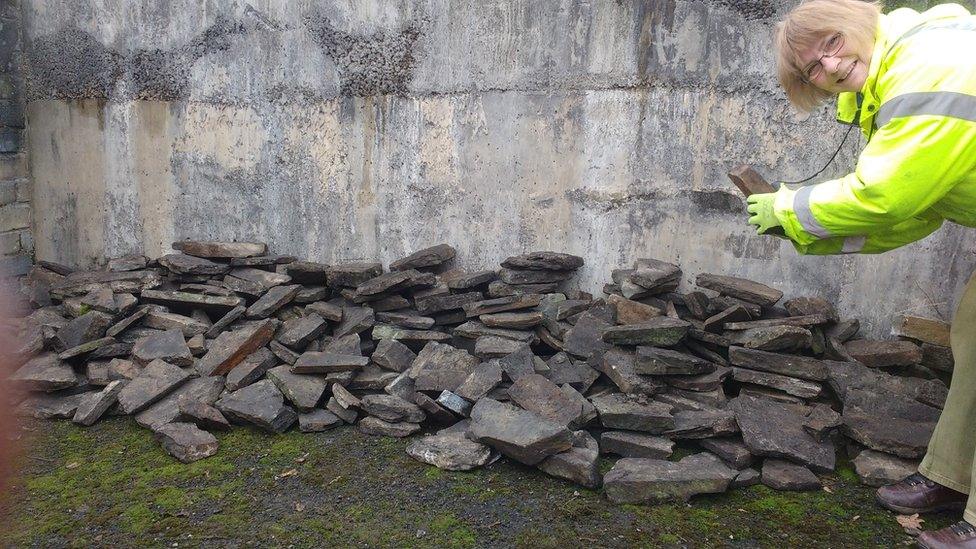
In the latest stage of the project, Swansea council has donated part of a former transport depot off Pontardawe Road in Clydach, which was built over the canal and lock number seven.
When reinstated, this 300ft (90m) stretch will link two sections of the canal already in water.
But, as Martin Davies of the Swansea Canal Society explains, the entire project was greatly helped by the extraordinary farsightedness of a council engineer, back in 1973.
"The society had talked for years about trying to excavate the section of the canal which runs through pipes beneath the transport depot, but we had no way of knowing what remained of the lock, and therefore whether there'd be any point," he said.
"Then a few years ago John Evans, the man who built the depot in 1973 made contact with us.
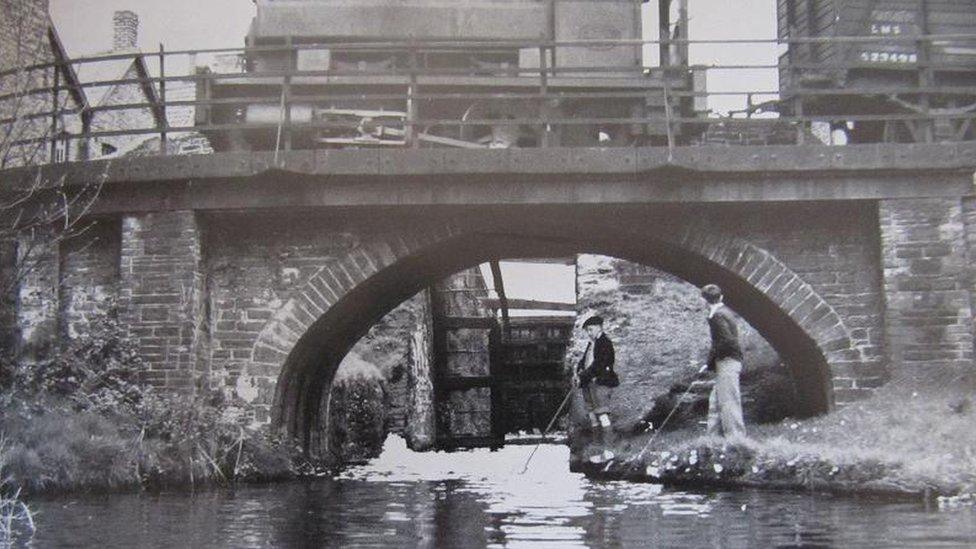
Boys fishing in the canal
"He said that even then he'd envisaged a time when people would want to save our industrial heritage, so before burying it under concrete, he'd re-pointed and reinforced lock number seven, and had only to remove the top five feet of the lock chamber to level it off.
"It's incredible. Without his imagination it would have been lost forever; so it's fitting that his son has gone on to be waterways manager on the Kennet and Avon Canal."
In its heyday the Swansea canal was a feat of 18th Century engineering; with 36 locks and five aqueducts carrying the water from 365ft (111m) at Abercraf, to where it reached sea-level at North Dock.
For a century and a half it carried around 400,000 tonnes of coal, iron and steel each year to feed the Industrial Revolution.
Indeed, several towns and villages such as Ystradgynlais, Ystalyfera and Clydach owe their very existence to its success.
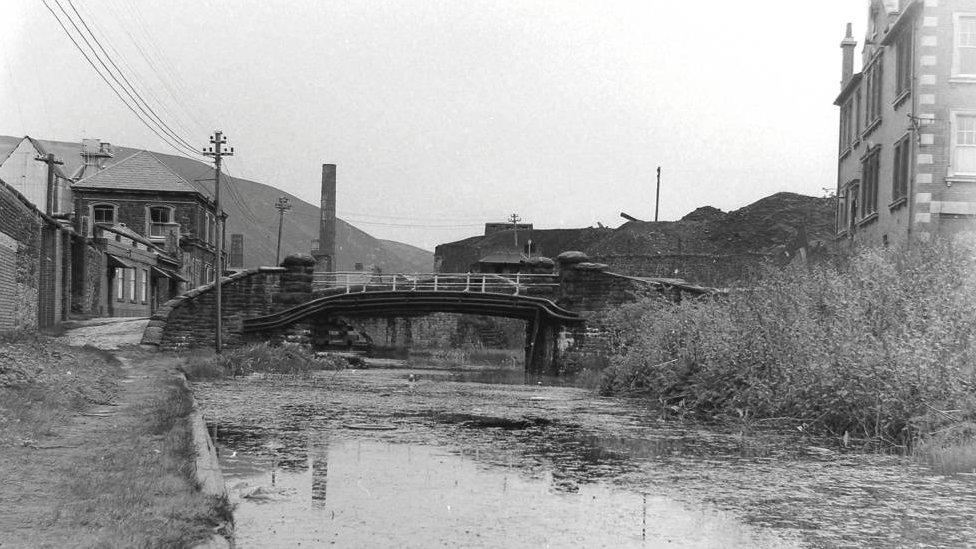
The bridge at Morfa copper works
But by the turn of the 20th Century it was feeling the pinch from the competition of railways, and the last commercial barge to travel the canal was in 1931.
"So much of our history came down that canal, from the copper works of Swansea, to the iron of the valleys, The Mond Nickel Works, and what was at the time the biggest tinplate works in the world at Pontardawe," said Mr Davies.
"After its closure in 1931 it was briefly used during World War Two, but after that it was gradually covered over.
"Back then there was no interest in preservation. There's even a piece of 1960s BBC news footage, talking about what a fetid eyesore it was, and how it needed to be built-over as soon as possible."
Whilst the reopening of lock number seven is still some years off, demolishing some of the transport depot and reinstating the towpath to extend Sustrans National Cycle Route 43 could be achieved relatively quickly.
Attention will then turn to dredging the navigable section of silt, with a view to holding a trail boat festival there in 2019.

A lock looking towards Pontardawe
Mr Davies now believes that the time has come where public thinking has turned full-circle away from burying our past.
"With the success of projects like the extension of the Liverpool-Leeds canal, authorities are recognising that for every £1 they spend on restoration, they can make back £7 in tourism," he said.
"If we can get the Swansea canal to reach the Fendrod River, onto the Tawe, and back to the docks, from there it would only take a short section of new canal to meet up with the Neath and Tennant Canals.
"That would give us a U-shaped 35-mile (56km) stretch which would take around three days to cruise, and how much tourist revenue could that raise?"
- Published23 August 2016
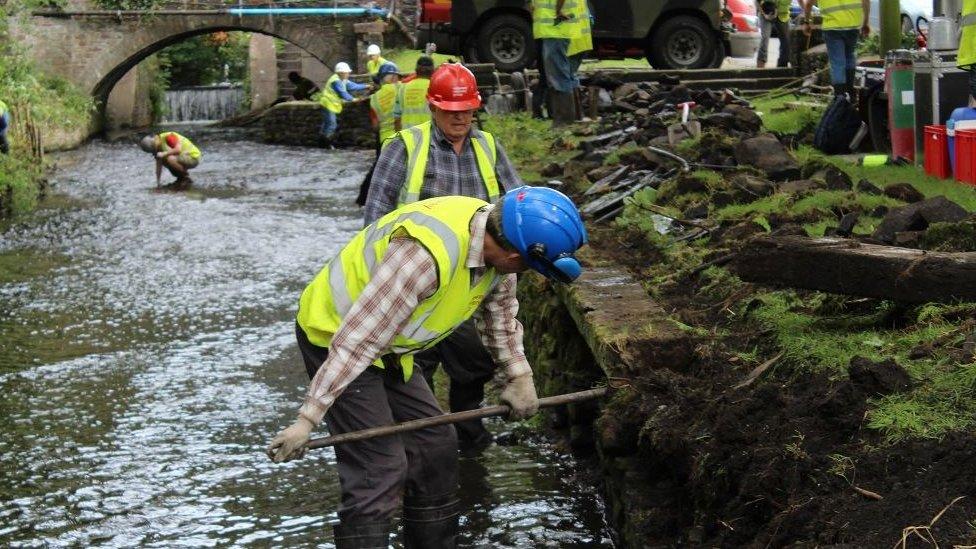
- Published5 September 2013
